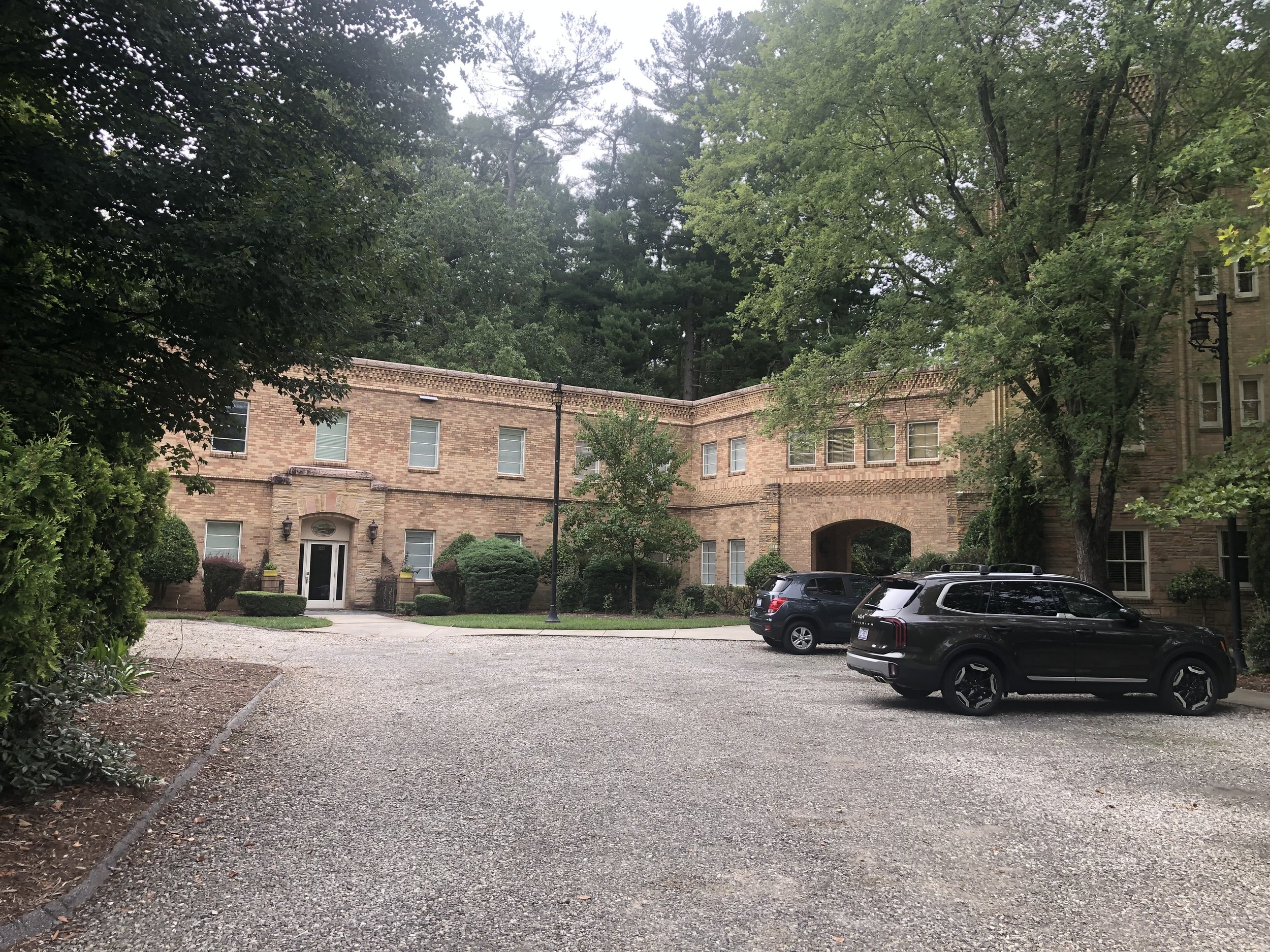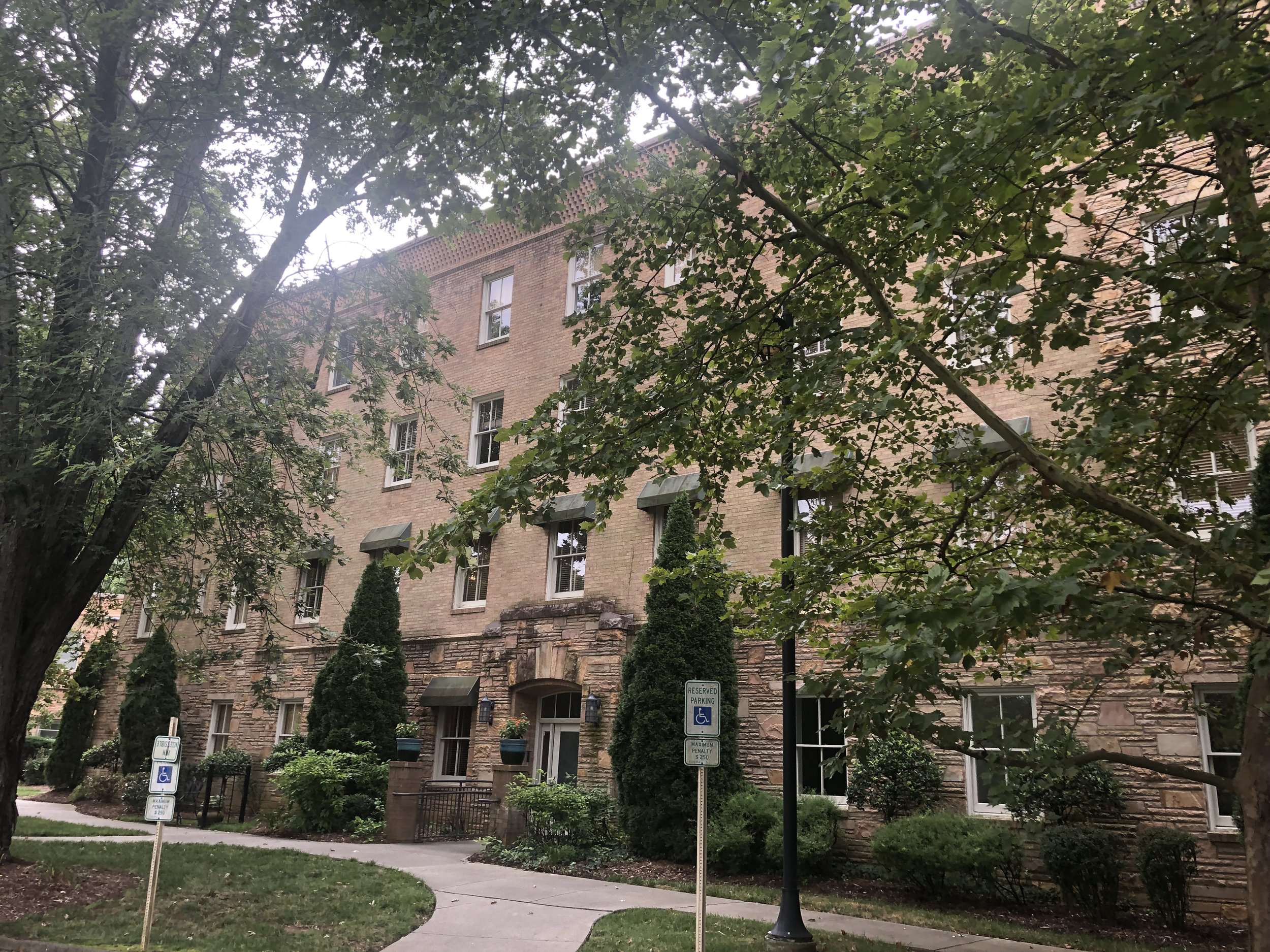The Hospital
The word “Asheville” means something very different to the generation of 30 – 40-year-old folks than it does to my generation. The young folks hear “Asheville” and think of microbreweries, hiking, fine dining, and general weirdness. (One often sees the bumper sticker, “Keep Asheville Weird.” They are succeeding.) My generation hears the word and thinks of the Biltmore House, the largest privately owned house in the United States.
Wikipedia describes the house as “one of the most prominent examples of Gilded Age mansions.” It is that. Construction began on the house in 1889 and was sufficiently completed so that the house could be opened up to friends and family in 1895. Why did it take so long? Well, it takes a while to build a house that has 178,926 square feet of floor space. The estate is nestled on 8,000 acres of land, which is a good bit less than the original 125,000 acres of land. Apparently, the imposition of a federal income tax put a financial strain on the family, resulting in the sale of a good bit of the original acreage.
George Washington Vanderbilt, grandson of Cornelius Vanderbilt, the shipping and railroad magnate, had the mansion built. Less than a year after its opening, George’s cousin, Clarence Barker, a talented musician, died at the mansion at the tender age of 31, from pneumonia. In addition to being relatives, the two were very close friends. In 1900, Vanderbilt and two of his cousins, sisters of the deceased, founded the Clarence Barker Memorial Hospital in Biltmore Village, the community that Vanderbilt established to house the 1,000 laborers and 60 stonemasons that built the Biltmore mansion.
A good bit of information about the hospital, and for that matter, about Biltmore Village, can be gleaned from the National Register of Historic Places Inventory/Nomination Form. An additional form covers the new hospital built to replace the original.
George Vanderbilt donated the land for the hospital and endowed it with $20,000. He committed to cover its future expenses, according to an informative website I found. (The same author also covers the new, replacement hospital, known as Biltmore Hospital.)
The hospital was small – it could handle only ten patients. According to the Lavilo website, there were two private rooms and spaces for eight patients in wards. Later, the original hospital was extended by six rooms, which included an operating room. This was finished sometime in 1905.
The hospital experienced a name change in 1919, to Biltmore Hospital. That did not seem to be a fortuitous change, as two years later the hospital experienced two fires. The structure was severely damaged, but repairable. The fires prompted Edith Vanderbilt, George Vanderbilt’s widow, to donate 15 acres of land to build a larger hospital with fireproof brick. Fundraising and construction were slow: the new Biltmore Hospital opened in 1930 and still stands today as a magnificent building. At that time, the former hospital, rebuilt and still standing today, was renovated and used to house and train nurses.
I stumbled across these former hospitals one day after a pleasant lunch at a nearby cafe. The sign, pictured above, drew my attention. I had two surprises. The first surprise was that such a hospital once existed less than two miles from my house, known only to those interested in local history. The second surprise came when I started doing research into these buildings. I grew up in the sleepy little town of Clayton, NC. It was, primarily, a farming community. It provided me with a wonderful childhood, with good friends and first-rate citizens of the town as examples to emulate. But the thing is, Clayton was never famous. I couldn’t mention one famous person who came from Clayton, until now.
Douglas D. Ellington, the architect who designed the Art Deco, new Biltmore Hospital was born in Clayton, North Carolina, in 1886.
Today, the rebuilt (original) hospital houses Griffin Architects, PA. The new hospital operated until it was sold in 1952 to an insurance company. The insurance company continued there until 1970 when the building became an elder care facility. The building then went to another set of owners, who opened the building in 2013 as Posh, The Boutique Hotel.
When I visited the building, I had the impression that the building now housed either apartments or condos. I did find Posh on the internet, through booking websites. There is no Posh website. The booking websites gave me the distinct impression that the hotel was still active, but when I tried to book a room, the response was “There are no vacancies on the dates you selected.” After trying as far forward as November 2024, I gave up. I do not believe that the hotel is in business, and I do believe that it has been converted into apartments or condos. It looks like a great place to live.
So here is to the Vanderbilts who gave the village a hospital, and to the Clayton boy who made it look good.
Enjoy the pictures below.
The original hospital can be seen, barely, straight ahead. The new hospital is to the right, around the bend.
The original hospital today.
Frontal view of the original hospital today.
The new hospital is at the end of Village Lane.
Our Clayton boy did a very nice job on the new hospital.
The new hospital looks like a very nice place to live.






